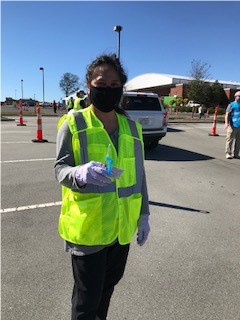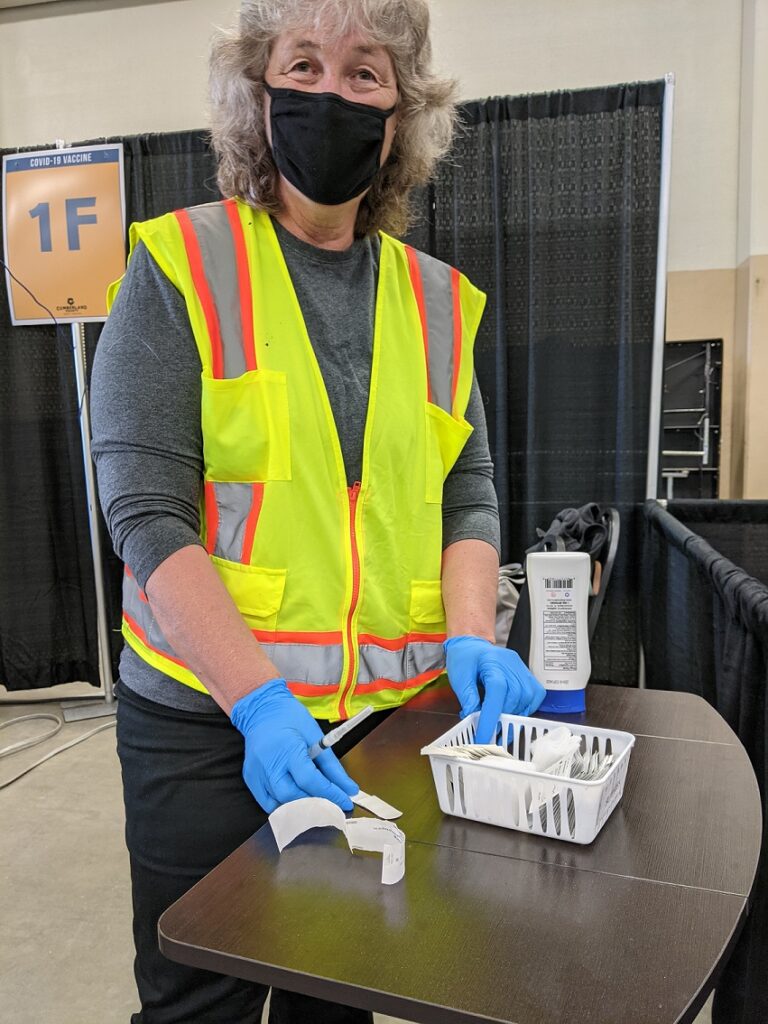Vaccinating the Community
No matter how far away a nurse gets from the frontline, we remain nurses at heart. A perfect example of this is our very own, Robin Williams, RN and Zabrina Gonzaga, RN. Zabrina practiced as a nurse and then as a nurse practitioner for 10 years prior to becoming a nurse informaticist in 2006, and Robin, prior to spending more than 20 years in healthcare information technology, provided direct patient care for 20 years. They have both volunteered to help their local communities in North Carolina by assisting with COVID-19 vaccination. We discussed the challenges, what motivates them, and how Lantana is contributing.
What motivated you both to volunteer during the COVID pandemic?
Robin: When the pandemic started, I knew there could potentially be limited resources. I wanted to be a part of the solution and help my local community. So, when the request for nursing staff came out, that was my chance to pitch in and help.
Zabrina: A close friend caught COVID-19 while working in the hospital and became very sick. She ended up being separated from her family for two weeks. Her experience really affected me, and I wanted to find a way to help our nursing community. So, when the opportunity opened to volunteer as a nurse administering vaccines, I applied to volunteer.
Tell us about your volunteering experience.
Robin: I have been working with my community’s local health department where there is limited access to Wi-Fi. Due to living in a rural area, most people do not have access to Wi-Fi and cannot make a vaccine appointment easily, especially the older population. As a result, the health department created a phone line allowing people to request vaccine appointments, but it was quickly overwhelmed with callers. My task was to help answer calls, return voice messages, answer questions, and complete forms to register people for the vaccines. People were shocked that an actual person returned their call and were incredibly grateful that they were not forgotten. Not having access to the registration forms is a great source of anxiety. Having someone return their call and complete the forms for them was comforting.
Zabrina: The volunteer missions I have participated in are an hour away from where I live. They are an outdoor drive to a vaccination clinic staffed with both clinical and non-clinical volunteers who work together to check in registered patients, administer the Pfizer vaccine, monitor patients after vaccine administration, and help schedule return appointments. During the first mission, the goal was to administer 600+ second vaccinations in the morning and 800+ first vaccinations in the afternoon. I took on the nurse role and administered the vaccination. During the second mission, the goal was to administer 1200+ first vaccinations to essential employees (Phase 3). I checked eligibility and followed up on the results of the COVID-19 vaccine questionnaire. During this step, the volunteers helped people who did not have access to the Internet sign up for the vaccine. My most memorable person was a 91-year-old woman who was not registered, didn’t know she needed to register, and had just driven up to the site. She was so patient and grateful that we were there to help her that she started to hand out popcorn to the volunteers.
What steps did you have to take to volunteer? Were there any qualifications or requirements? Were there any challenges?
Robin: The process was not easy and took a lot of time. I started asking my local health department about volunteering in April but did not start until January, and I was unable to directly administer the vaccine given the liability issues. Even after we learned about the North Carolina agencies who were recruiting volunteers, we were faced with searching for the proper application link and completing the required training before starting.
Zabrina: Navigating the system was challenging and finding out where to volunteer was unclear. You had to be committed to looking, talking to friends, and searching. I applied through multiple venues before I was able to get a response to join a volunteer group. I ended up registering through a local emergency preparedness volunteer group in NC associated with public health. To volunteer, there is a required orientation and training modules to complete with certificate documentation such as pathogen, vaccine specific, and HIPAA training.
How would you say Lantana supported you to do this?
Robin: The easiest part of volunteering has been having Lantana’s full support. They provided paid personal time to cover training and volunteering.
Zabrina: Lantana has been extremely generous and more than supportive and flexible with my schedule and allowing me to use personal time to volunteer during work hours. Lantana is essentially giving back by supporting us during this process.
Have you ever volunteered for anything like this before?
Robin: In the mid-90s, I volunteered at a flu shot vaccine clinic while I was working in home health. The home care agency asked for volunteers and we signed up. There was no additional training or onboarding needed.
Zabrina: I previously volunteered weekly in a free medical and dental clinic for several years. The clinic provided primary medical care and dental extractions for people whose income was less than 200% of the poverty level and served residents of the local homeless shelter.
If you could tell the public anything regarding this topic, what would you say?
Robin: Outreach can be challenging! For anyone interested in getting the COVID-19 vaccine, start with your local health department or pharmacy for location information. Be patient and leave a message. Someone will call you back! When people say they are not going to get a vaccine, don’t get defensive, instead ask, “What would make you change your mind and get the vaccine? Have you talked to your doctor about it, and what is their suggestion?”
Zabrina: Serve as a COVID-19 resource for your neighbors and your community. If they are unsure about getting the vaccine, scared about their first shot, or do not want to get the vaccine, listen to them, and understand their reasons. Offer resources and answer questions to help them understand the value of getting vaccinated.
Both would love to continue volunteering. Things are changing every day. It’s fascinating and we are all living in it. Robin recently volunteered as a vaccinator at a local COVID-19 vaccine clinic and plans to continue to volunteer until there is no longer a need.
Zabrina is awaiting her next mission as she continues to serve as a volunteer.
Resources:


